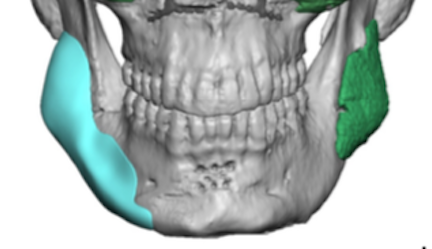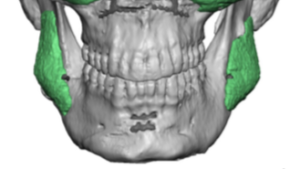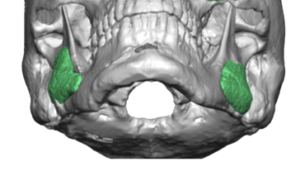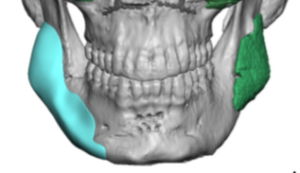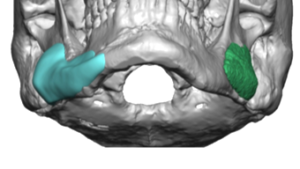Background: The shape of the lower face is affected by the posteriorly paired jaw angle bones. The jaw angles are three-dimensional structures which have length, width and a shape influenced by the posterior projection of the intersection of its posterior and inferior borders. While located in the back part of the lower face the symmetry of the jaw angles is easily seen and scrutinized.
While many people do not have naturally good symmetry between the jaw angles, certain procedures can create asymmetry on their own. The most common surgical procedure performed on the jaw angles is the sagittal split ramus osteotomy. (SSRO) Splitting the thickness of the bone sagittally allows the teeth-containing distal segment to be moved forward or back, putting the split ramal segments back albeit with an altered shape. Between these bone shape changes, how these partially devascularized bone segments heal and that there are two sides, it is not rare that bony jaw angle asymmetry can result.
Since the SSRO can not produce any jaw angle width, secondary aesthetic augmentation using jaw angle implants may be desired. The use of standard jaw angle implants may be effective but further asymmetry is always a high risk. Between two different bony sides and the variables that come with jaw angle implant placement, it can be hard to avoid noticeable asymmetry afterwards.
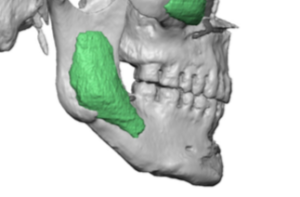
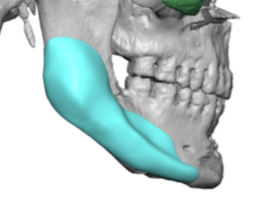
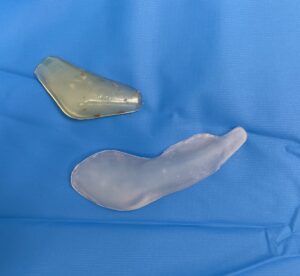
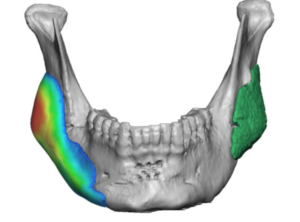
Case Highlights:
1) Sagittal split osteotomes (SSRO) of the mandibular rami can create bony jaw angle asymmetry.
2) Standard jaw angle implants may help secondarily to improve jaw angle shape but symmetry can be hard to achieve.
3) A custom jaw angle implant design provides the best change for bilateral posterior lower facial augmentation symmetry.
Dr. Barry Eppley
Indianapolis, Indiana

